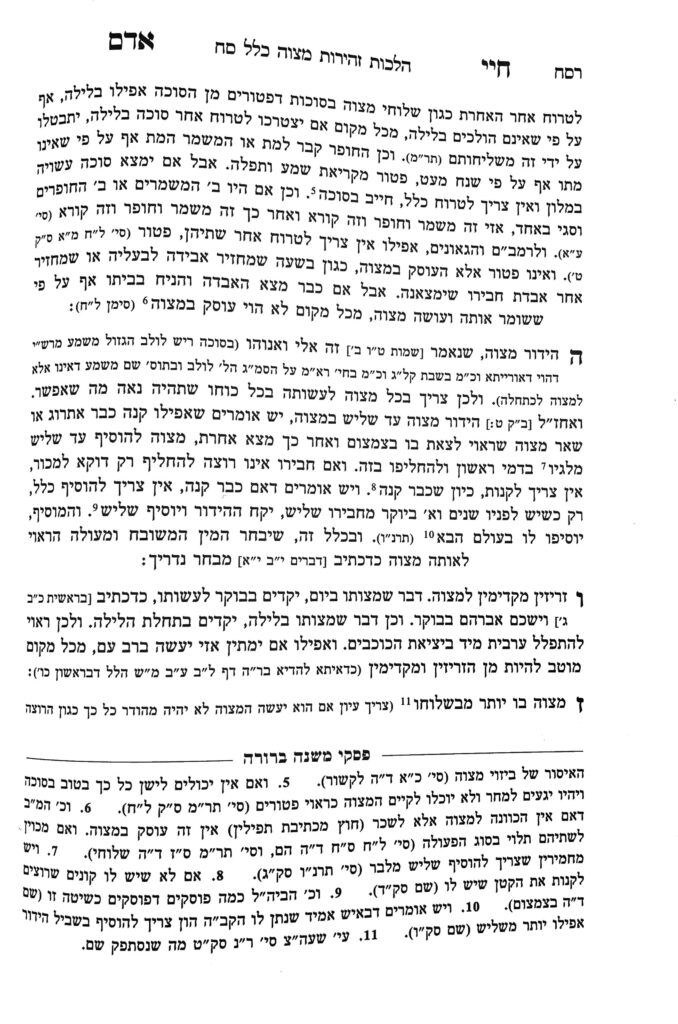We are beginning siman 5, where the Chayei Adam discusses the concept of hiddur mitzvah,.
The Chayei Adam writes that one of the concepts a person must be aware of when they do a mitzvah is the concept of hiddur mitzvah, doing the mitzvah in a manner which is more beautiful. This concept is learned from the pasuk zeh keili ve’anveihu. One of the explanations of Chazal to understand this pasuk is that it refers to beautifying mitzvos. Rashi in Maseches Sukkah understands that this pasuk is not just an asmachta, but a mitzvah deoraysa. Rashi understands that the reason a dried out lulav is pasul is because of this concept. The Chayei Adam points out that hiddur mitzvah can also be inferred from Maseches Shabbos. The Gemara says that although one is yotzei the mitzvah of bris milah by taking off a minimal amount of the orlah, it is a hiddur mitzvah to take off more than the minimum.
Regarding lulav, Tosfos understands that the reason a dried out lulav is pasul is not because of the pasuk of zeh keili ve’anveihu, but because of a different pasuk which stipulates that the lulav must be hadar. According to Tosfos , there is no source which teaches that hiddur mitzvah is a mitzvah deoraysa in general, but just a specific halacha regarding lulav. Tosfos agrees that the concept of hiddur mitzvah exists, just that it is not meakeiv (because it is). The machlokes Rashi and Tosfos is whether hiddur mitzvah is meakeiv in fulfilling the mitzvah or not.
The achronim point out that even according to Rashi, hiddur mitzvah will not always be meakeiv. Hashem gave the power to Chazal to determine in which situations the hiddur mitzvah is meakeiv, and in which situations it is not meakeiv. This power is similar to the power given to Chazal to determine which melachos are assur and muttar on Chol Hamoed, where the concept of making Chol Hamoed different than a regular weekday is deoraysa, but Hashem gave Chazal the mandate to determine which melachos would be included. Tosfos appears to understand that hiddur mitzvah is never meakeiv, therefore he required a different pasuk to explain why specifically by lulav it is meakeiv.
The Chayei Adam continues, and writes that this concept does not just apply to lulav, but to any mitzvah.
Summary
Hiddur mitzvah is the concept that one must beautify a mitzvah when they perform it. Rashi understands that hiddur mitzvah is a chiyuv deorasya, with the power given to Chazal to determine where it is meakeiv and where it is not meake



